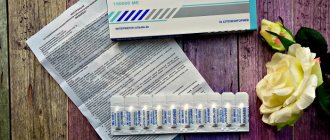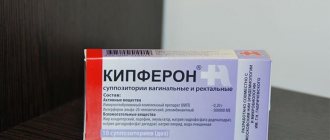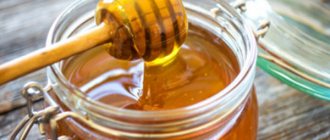Rating: 5 / 5
Berodual is produced in Italy in Florence by the Instituto de Angeli S.R.L. 50066 Reggello. The pharmaceutical drug belongs to the combined bronchodilating agents. Used to relieve suffocation syndrome and ease breathing. It is produced in the form of a solution for inhalation through a nebulizer. Prescribed to adults and children of all ages. Sold with a prescription.
Description and cost of the drug
Berodual solution has no sediment, is colorless or has a yellowish tint, and has a barely perceptible medicinal odor. This form is used for inhalation using nebulizers of any type. The drug is packaged in 20 ml bottles with a dropper. As of September 2021, its price varies between 200–600 rubles.
The inhalation aerosol is called Berodual N. The drug is packaged in opaque cans with a 10 ml dispenser (200 doses). The minimum cost is 370 rubles. This form of medication does not require a nebulizer: the bottle is already equipped with an inhalation nebulizer.
Action of the drug
With the help of Berodual inhalations for children, it is possible to use smaller doses of other medications, increasing the effectiveness of basic therapy. The combination of its active substances prevents the production of too much mucus, has a relaxing effect on the walls of the bronchi, and helps reduce inflammation and swelling of their membranes.
After aerosol administration, the lumen of the respiratory tract expands after 15 minutes, the effect lasts up to 6 hours. The child’s lungs are better ventilated, breathing becomes more even, signs of suffocation are eliminated, coughing attacks become less frequent, occur more easily or disappear, and wheezing disappears.
Side effect of the drug
Most often during treatment, dryness, sore mouth, coughing, hoarseness, pharyngitis, dizziness, cephalalgia, nausea, increased heart rate, trembling of fingers, changes in pressure, and disturbances in gastrointestinal motility appear. Also recorded were upset stools, itchy skin, increased sweating, eye pain, and blurred vision.
In 1 out of 10,000 cases, the following was detected:
- anaphylactic reaction;
- Quincke's edema;
- broncholaryngospasm;
- urinary retention.
Attention! Side effects may be signs of overdose. When they appear, the child should be shown to a doctor. In complex cases, intensive therapy is required. Only a doctor can determine the severity.
Side effects
During therapy with Berodual, children and adults may experience negative side effects:
- allergic reactions up to Quincke's edema;
- decreased potassium concentration;
- increased excitability, nervousness, headaches, dizziness, tremor;
- increased pressure inside the eyes, pain in the eye area, swelling of the cornea, redness of the conjunctiva and blurred vision;
- pathologies of the heart rhythm, increased pressure in the arteries (diastolic);
- pharyngitis, voice changes, laryngospasms, feeling of dryness of the mucous membranes of the pharynx;
- disorder of the digestive system;
- urinary retention.
To avoid side effects, it is very important to breathe Berodual to a child who coughs strictly according to the regimen prescribed by the attending physician. If any discomfort develops, it is necessary to interrupt the inhalation procedure and consult a pediatrician.
When is the medication used?
Berodual in solution or aerosol is prescribed for chronic diseases with airway obstruction. Used to relieve suffocation due to narrowing of the lumen of the bronchus.
It is appropriate to prescribe the drug to children diagnosed with:
- COPD;
- emphysema;
- asthma;
- obstructive bronchitis.
Direct indications for Berodual also include preparing the airways for subsequent inhalations of antibiotics, mucolytics, glucocorticosteroids or other drugs. The doctor may authorize the use of the drug for the prevention of acute attacks of asthma, treatment of complicated laryngotracheitis, tuberculosis.
Therapy for cough
Berodual does not treat the causes of cough, but relieves its attacks. The use of an inhalation drug is permissible only in complex therapy.
Berodual is prescribed for:
- non-infectious dry cough with a bronchospastic reaction (characteristic of asthma, allergies);
- profuse production of sputum with wheezing;
- suffocating wet cough.
Attention! Berodual cannot relieve a dry cough without concomitant narrowing of the bronchi or due to the entry of crumbs or liquid into the respiratory tract while feeding the child.
Inhalations with a solution of Lazolvan and Berodual
There are many medications used to treat respiratory diseases. Based on their mode of action, they can be divided into 3 groups:
- bronchodilators (Ventolin, Berotek, Berodual);
- expectorants (Lazolvan, Acc, Rotokan, Mucaltin);
- antiseptic, anti-inflammatory and antibacterial drugs (Miramistin, Fluimucil, Decasan, Dexamethasone, Gentamicin).
Each of them is used at a certain stage of treatment. Doctors often recommend using drugs such as Lazolvan and Berodual for additional treatment of the respiratory system.
Lazolvan
Inhalations with Lazolvan are the most effective. The composition contains ambroxol, it is a mucolytic, therefore it is used in the treatment of productive cough. The action of Lazolvan is as follows:
- Thins mucus in the lungs and bronchi.
- Helps remove mucus. The positive effect is noticeable within half an hour after inhaling the drug and lasts for at least 8 hours.
- Reduces the concentration of microbes in the respiratory tract.
- Softens the mucous membranes of the bronchi, making coughing less painful.
- Strengthens the effect of antimicrobial drugs.
If there is increased reactivity of the respiratory tract, it is better not to use Lazolvan to avoid bronchospasm.
To prepare an inhalation solution, take Lazolvan with a concentration of 7.5 mg per 1 ml and mix with the same amount of saline solution. For 1 procedure, 2–3 ml of solution is sufficient.
Berodual
This drug is used at the first stage of respiratory diseases, for dry cough, and also for nasal congestion. Berodual helps to liquefy bronchopulmonary secretions, facilitating cough and breathing. The drug is especially suitable for asthmatics. It relieves spasm of bronchioles, increasing their lumen, reduces swelling of the alveoli and shortness of breath. In addition, the drug has an anti-inflammatory effect and enhances the effectiveness of antibacterial drugs.
Berodual for inhalation is taken in the amount of 2–8 drops per 3 ml of saline solution. The duration of the procedure is 7–10 minutes, until the entire dose is used up. 20–30 breaths are taken.
Berodual should not be used for bacterial infections of the nasopharynx, otitis media, nosebleeds, or tracheitis.
In especially severe cases, doctors recommend taking Berodual in combination with Lazolvan.
Contraindications for the drug
Drugs containing fenoterol and ipratropium bromide are used with caution in pediatrics, regardless of the presence of concomitant diseases. The solution is prescribed for any age of the child, but for infants and 1–5 year old children there is a strict dosage. Aerosol Berodual N is prohibited for patients under 6 years of age .
The drug is contraindicated in:
- tachyarrhythmias;
- hypertrophic cardiomyopathy with obstruction;
- sensitivity to any of the substances in the composition;
- intolerance to atropine and its compounds.
Attention! Fenoterol passes into breast milk and enters the baby's gastrointestinal tract. During treatment with Berodual, it is advisable for nursing women to switch their baby to artificial nutrition.
Dosing of medication
The instructions indicate the general dosage and frequency of use of Berodual without taking into account the individual nuances of the course of the disease. Therefore, the drug should be used according to the recommendations of the attending physician after examination and weighing of the child.
Standard aerosol dosing
To relieve an acute attack in children or adults, it is recommended to inject 2 doses of Berodual N. If there is no effect after 5 minutes, 2 doses are administered again. If there is no effect after 4 inhalations, the child is urgently taken to the doctor for examination and selection of another treatment plan.
If the doctor has prescribed long-term intermittent treatment:
- the procedure is done 1-4 times/day, no more than 8 doses per 24 hours;
- the interval between inhalations is maintained at least 4 hours;
- For 1 inhalation, 1-2 doses are injected.
Important! Berodual for inhalation for children at high risk of respiratory failure is prescribed 1 dose twice a day. To stop an attack, it is allowed to inject the medicine 2 times; if necessary, the procedure is repeated after 5 minutes.
Standard dosing of solution
On forums, parents of preschoolers share information that in the physical rooms of medical institutions they use a standard scheme: one drop for each year. According to the instructions, a child aged 1–5 years weighing less than 22 kg is prescribed 25 mcg ipratropium bromide + 50 mcg fenoterol per 1 kg of body weight, but not more than 10 drops of Berodual per procedure. Inhalations are allowed 1-3 times/day.
On a note! 1 milliliter of Berodual solution contains 20 drops, each of which contains ipratropium bromide 12.5 mcg + fenoterol 25 mcg.
How many drops of Berodual does a child need for inhalation:
| Age | To stop an attack | To relieve a severe attack | To relieve moderate bronchospasm | For intermittent long-term treatment |
| Teenagers from 12 years old | 20 drops per 1 inhalation | 40–80 drops/1 procedure | 10 drops/1 aerosol injection | 10–40 drops/1 time |
| Children 6–12 years old | 10–20 drops /1 time | 40–60 drops/1 inhalation | 10 drops/1 procedure | 10–20 drops/1 aerosol injection |
| Infants | The dosage is calculated by the doctor after an individual examination and weighing of the child. Depending on the severity of Berodual attacks, children under one year of age can be prescribed from 1 to 10 drops per inhalation. | |||
Note. For intermittent treatment, the frequency of procedures should not exceed 4 times/day. Therapy begins with the smallest dosage, gradually increasing the concentration of the solution and stopping at the effective volume. Treatment is stopped after signs of bronchospastic conditions have disappeared.
Features of use
Therapy with Berodual in children and adults should begin with a minimum dosage, which is increased if necessary.
The inhalation solution is diluted with saline to 3-4 ml (the required volume for a nebulizer). It is not recommended to dilute Berodual with distilled water.
The finished product can only be used by inhalation; oral use of the drug is strictly prohibited.
To carry out the procedure, you should prepare a new solution each time, and dispose of the remaining solution after inhalation.
If the medication is used using an oxygen system, the recommended flow rate is 6 - 8 liters per minute.
The doctor prescribes how many days to breathe Berodual for a child on an individual basis. This may depend on the severity of the condition and the age of the young patient. The duration of therapy for obstructive bronchitis is no more than 5 days for children.
When using a nebulizer, you should remember to clean the drug in a timely manner, according to the attached instructions.
If, after using 4 inhalations of Berodual in aerosols, there is no improvement, you must inform your doctor.
For the treatment of asthmatic disease, the medicine should be used only when necessary.
The use of the drug in children under 6 years of age should only be carried out under the strict supervision of a pediatrician.
Carrying out the procedure with a nebulizer
It is forbidden to use distilled water, so Berodual can only be diluted for inhalation by a child with saline solution (purchased at a pharmacy). You cannot drink the drug, gargle your throat, mouth or rinse your nose with liquid, wet cotton pads or make intranasal applications. Procedures are carried out under adult supervision.
How to dilute medicine for a nebulizer and do inhalation:
- Use a syringe to draw up 3 ml of saline solution for injection and pour it into the cleaned container of the inhaler.
- Add to the nebulizer the number of drops of Berodual that the doctor prescribed. If necessary, adjust the volume of liquid to 4 ml with saline solution.
- Close the container with the solution and easily rotate it in a circle to mix the substances.
- The solution is ready, connect the remaining parts of the inhaler, and turn on the device.
- The child should breathe for no longer than 7 minutes.
After each procedure, the device must be cleaned according to the requirements of its operation. If a child is being treated for an infectious-inflammatory disease, the mouthpiece or mask must also be disinfected.
Carrying out the procedure with an aerosol
The drug is used under adult supervision. The can cannot be opened, heated, or left near hot appliances. The product must not be sprayed onto wounds or burns.
Before the initial use of Berodual N, the can is shaken several times, turned bottom up and 2-3 doses are sprayed into the air to check the operation of the sprayer.
Algorithm for inhalation of Berodual N for a child:
- Remove the cap from the dispenser.
- The aerosol can is turned upside down. If the medicine has not been used for more than 2 days, 1 dose of the product is sprayed into the air.
- The child is asked to exhale slowly and completely and hold his breath.
- Insert the mouthpiece into the child's mouth and, as he slowly inhales, spray Berodual once, pressing down on the bottom of the balloon.
- After spraying, the child must inhale completely, hold his breath, and remove the mouthpiece from the mouth.
- If the doctor prescribed 2 doses for 1 inhalation, you need to repeat steps 2 again.
- After the procedure, the dispenser is covered with a cap.
The Berodual inhaler for children is cleaned at least once a week by removing the canister from it and rinsing it under running water. Then the device is shaken off from moisture and left in the room to dry. The mouthpiece is wiped with a disinfectant after each use if the child has an infectious disease.
Features of the use of the drug
The child needs to dilute Berodual with saline solution again before each inhalation. Unused liquid remains are not stored. Procedures can be done at night. Do not increase the dosage: an excess of the substance causes respiratory failure.
Inhalations should be carried out in the intervals between meals (with an interval of more than an hour) and active types of games. After the procedure, it is not recommended to eat or drink for 30 minutes.
Elevated body temperature is not a contraindication for the use of Berodual, since a nebulizer or aerosol is a non-hot inhalation. According to the standard, doctors prescribe a 5-day course of procedures. During this same period, the child should drink or be given aerosol cough suppressants, antibiotics and/or other medications.
If during treatment with Berodual there is shortness of breath, swelling of the mucous membranes, urticaria, or health worsens, the child must be urgently taken to the hospital. If the solution gets into the eyes, wash the conjunctiva and cornea.
Combined inhalations with other medications
Berodual therapy is combined with Pulmicort or other budesonide preparations. After inhalation with GCS, the child should rinse his mouth and spit out the water to prevent candidiasis from developing.
Mucolytics include Lazolvan, Ambrobene or another ambroxol agent. It is advisable to do these inhalations a couple of hours before bedtime. After the procedure, mucus begins to be intensively removed from the bronchi, and the child coughs more often.
How to carry out combination therapy:
- Inhalations with Berodual and saline solution for children are done first to dilate the bronchi.
- After a quarter of an hour, inhalation of the drug budesonide or mucolytic is carried out.
All products are diluted with saline; the dosage is selected by the doctor individually for each child. It is not recommended to mix corticosteroids and mucolytics together, since controlled studies of their interaction have not been conducted.
Important! Any combination therapy regimen is carried out under medical supervision.
Inhalation with a nebulizer
A nebulizer is a device that converts a medicinal substance into ultra-small dispersed particles (3-10 microns). Through a nebulizer, the medicine enters directly into the respiratory system, bypassing the liver: this natural protective barrier can partially destroy the drug substance.
To carry out the procedures, 3 types of devices are used:
- ultrasonic;
- compressor;
- electronic mesh.
Nebulizers are simple and safe to use. Each type has its own advantages and disadvantages. Compressor and electronic mesh devices are universal, used to treat all diseases, as they form small particles. Ultrasonics create aerosols with large particles and are therefore not suitable for treating the lower respiratory tract.
Nebulizers are used to treat the following diseases:
- colds of the nose, mouth and nasopharynx;
- diseases of the larynx, trachea, bronchi;
- bronchial asthma;
- all types of pulmonary diseases, including tuberculosis.
The solution for inhalation is prepared according to the doctor’s recommendation immediately before use. The prepared solution can be stored in the refrigerator for no more than 12 hours (before use, it is heated to a temperature of 30–32 °C). Pharmacies sell ready-made dosage forms - nebulas. If necessary, their contents are mixed with saline solution.
The medicinal substance and saline solution must be in strict proportions. Increasing the concentration of the drug can lead to side effects, and decreasing it can lead to insufficient therapeutic effect.
Additional recommendations
The duration of the procedure depends on the age of the patient and the doctor’s recommendations. Minimum – 3 minutes, but no more than 15 minutes. It is carried out in this way: take a deep breath - hold your breath for 2-3 seconds - calmly exhale through your nose. For the treatment of rhinitis and sinusitis, a nasal tip is used, for the middle respiratory tract - a mask. Inhalation of aerosols for diseases of the bronchi and lungs is carried out using a mouthpiece. It is not recommended to use essential oils, solutions prepared from tablets, syrups, or herbal decoctions in nebulizers. This leads to inaccuracy in the dosage of the medicine and damage to the device.
Proper use of a nebulizer










